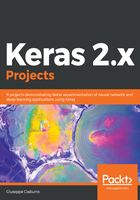
Basic concepts of ANNs
ANNs are mathematical models thatare able to simulate the usual activities of the human brain such as image perception, pattern recognition, language comprehension, and sensory-motor coordination. These models are composed of a system of nodes, equivalent to the neurons of a human brain, which are interconnected by weighted connections, equivalent to the synapses between the neurons. The output of the network is iteratively changed from the link weights up to the convergence. The data to be analyzed is provided via the input level and the result provided by the network is returned from the output level. Input nodes represent the independent or predictive variables used to predict dependent variables, such as output neurons.
Modern computers and bundled software are very powerful tools for performing the tasks that require repetition of a series of well-defined operations where accuracy, reliability, and speed are the key features. These information-processing systems are very useful but are certainly not intelligent: the only element of intelligence in the whole process is the programmer who has analyzed the task and created the program. In order for an artificial system to be intelligent, it should at least be able to solve the problems that human beings find simple and commonplace.
ANNs try to simulate the functioning of biological nervous systems that are made up of a large number of nerve cells or neurons connected to each other in a complex network. Each neuron is connected on an average with tens or thousands of other neurons. Hence, there are hundreds of billions of connections. Intelligent behavior arises from the many interactions between interconnected units. Some of these units receive information from the environment, others emit responses in the environment, and some others only communicate with the units within the network: they are defined as input units, output units, and units hidden (hidden) respectively.
Each unit (neuron) performs a very simple operation, which consists of activating itself, if the total amount of signal it receives exceeds a certain threshold of activation. If a unit becomes active, it emits a signal that's transmitted along the communication channels to the other units to which it's connected; each connection point acts as a filter that transforms the received message into an inhibitory or excitatory signal, increasing or decreasing its intensity according to its own individual characteristics.